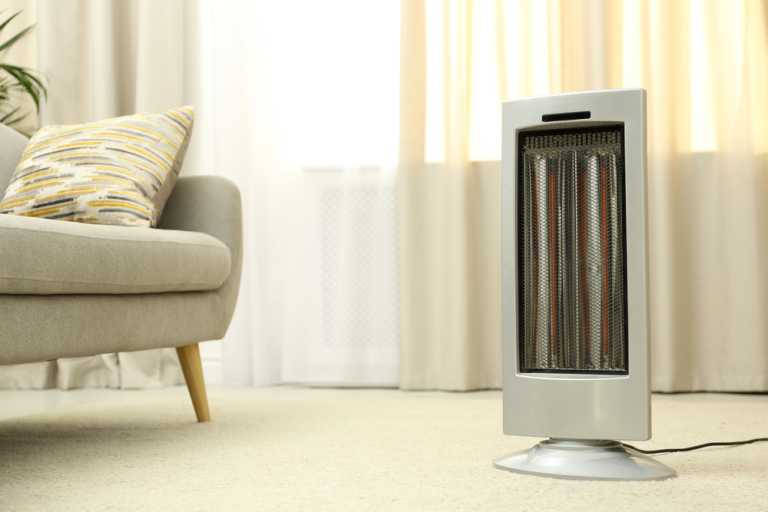Babies are obligate nose breathers and don’t know how to breathe through their mouths unless they’re crying. This means their tiny noses are getting a constant workout, and any signs of stuffiness will really stand out.
The good news is that if your newborn sounds congested but there’s no mucus in their nose, they’re probably not sick. The culprit is more likely dry air, irritants, or simply the fact that their noses are so tiny!
So, let’s get to the bottom of what’s causing your baby’s stuffed-up nose and find out how you can help.
Can a Baby Be Congested Without Mucus?
As your newborn’s nasal passages are just 2mm wide, a little irritation, clear mucus, or swelling can easily cause blockages. This means they can sound congested without having a cold or flu and all the yellow/green snot that comes with it.
You can tell that your baby is congested by looking out for these symptoms:
- Noisy breathing
- Snoring
- Trouble feeding
Congestion in newborns is normal and usually harmless. However, as it’s a problem associated with your little one’s breathing, it’s important to be aware of the following warning signs. You must seek medical advice urgently if your baby:
- Has a fever, which is a temperature of 100.4° F (38.0° C) or higher.
- Is lethargic, listless, or difficult to wake.
- Is wheezing or grunting with each breath.
- Is coughing nonstop.
- Has difficulty breathing. Signs include nostril flaring, blue lips, short, fast breaths, and chest retractions. This is where their chest sucks in around their ribs or collarbone with each breath.
- Is not drinking enough to fill at least 6 wet diapers a day.
What Causes Newborn Congestion Without Mucus?
Once you’re confident your baby’s not sick, it’s time to look at what else could be causing their stuffy nose.
Here are the most likely reasons:
Dry Air
Low humidity or dry air irritates your baby’s nasal passages. So their body will respond by producing more mucus, making them sound congested. This mucus won’t dribble out, like if they had a cold, so you won’t see it.
Dry air could result from your home’s heating or cooling system. Or, it could be due to a dry climate.
Winter
As the seasons change, the air gets colder and drier. So even if you’ve made no changes in your home, your child might become congested in winter.
Irritants
As your baby’s nasal passages are so delicate, they are super sensitive to airborne irritants like:
- Cigarette smoke
- Air fresheners
- Perfume
- Cleaning products
- Aromatherapy diffusers
- Paint or varnish
- Cooking smoke
Irritation of the nasal passage triggers inflammation, swelling, and mucus production. All of which can cause blockages and congestion.
Allergens
A nasal allergy, or allergic rhinitis, is a common cause of congestion in adults. It occurs when they’ve been exposed to an allergen and have produced antibodies. Then their immune system overreacts when exposed to it again.
As your newborn’s immune system isn’t fully developed, allergies are unlikely to be the cause of their stuffy nose. However, it’s not impossible, particularly if you have a family history or they’ve been exposed to very high levels of the allergen.
The most common triggers in babies are:
- Dust
- Mold
- Pet dander
- Dust mites
- Cockroaches
- Pollen – This is less likely to affect newborns because they don’t tend to spend much time outside.
Reflux or Spit Up
If your baby frequently vomits or spits up, you may find that some of it comes out of their nose. This can irritate the mucous membranes and cause congestion.
If you think your baby is suffering from reflux, visit your doctor. They’ll be able to make a diagnosis and provide information about the best treatment.
Physiology
If your baby was born prematurely or had a very low birth weight, their nasal passages will be narrower. This means they’re more likely to sound congested, even if their airways aren’t irritated.
How to Alleviate Your Newborn’s Congestion
Now that you know what’s causing your little one’s stuffy nose, let’s check out the home treatments that can help:
Eliminate Irritants From Your Home
Remove any air fresheners and scent diffusers, ban smoking inside or near an open window, and try not to use strong perfumes or aerosol deodorants.
Switching to unscented or less potent cleaning products may also be helpful.
Reduce Air-Bourne Allergens
With your baby out of the house, conduct a deep cleaning. Pay extra attention to removing dust from surfaces and carpets. Consider hiring an industrial cleaner to get a really deep clean.
Also, check for mold behind and under furniture, and call a professional to remove it if you find any.
Finally, if you have pets, you may need to vacuum daily to keep pet dander levels down. You might also want to consider using an air purifier with a HEPA filter. These will remove over 99% of pollutants and large allergens. As a bonus, they kill germs too!
Use a Humidifier
Check the humidity level in your home with an inexpensive hygrometer. If the humidity is below 40%, your whole family will benefit from using a cool mist humidifier.
Your baby will get the most relief from having one run in their room overnight. So choose a model like this with a tank that’ll last at least 12 hours.
It’s also vital that it’s easy to clean and that you clean it often. If you allow mold to build up inside the humidifier, it could make the problem worse.
Keep Your Baby Upright
During the day, use a baby carrier, swing, or bouncer to keep your little one upright. Spending less time on their back will help keep their nose clear of mucus and allow them to breathe freely.
At night, though, they must lie flat on their back. Don’t use any kind of positioner to prop them up, as it’s not safe.
Facial Massage
Using your thumbs, gently massage down the sides of your baby’s nose and across their cheekbones. This will help drain their sinuses and give them some relief.
Warm Baths
The warm, humid environment in the bathtub will loosen mucus and ease congestion. Aim for 100°F or 38°C, and always test the water with your wrist.
Try Saline Drops
Squirting infant saline drops or saline spray up your little one’s nose will loosen stubborn mucus. Then, if you’re lucky, they’ll sneeze it out. If not, check out the next solution.
Use a Nasal Aspirator
After loosening the mucus, you’ll need to get it out. There are four choices, depending on how strong your stomach is regarding snot.
- Bulb Syringe – Simply squeeze the bulb, and it’ll pull out the snot as it reinflates. Make sure you choose one that’s the right size for infants and their teeny nostrils.
- Electric Aspirator – These devices are effective but a little pricey.
- Nose Frida – Cheaper than electric aspirators, but you have to suck the snot out yourself. Don’t worry; it won’t go into your mouth!
- Mother’s Kiss – Block one nostril and gently blow into your little one’s mouth. The air should come out of their nose and bring the snot with it. However, you need to take care not to blow too hard, which could damage your baby’s lungs.
When to Worry About Your Baby’s Nasal Congestion
Although a bit of baby congestion is normal, it can become a problem if:
- It’s interfering with their feeding, which can cause dehydration or slow weight gain.
- It’s interfering with their sleep, which can be exhausting for you both.
- It’s not resolving after following the home remedies listed above.
In these cases, you should take your baby to see their pediatrician. They will look for evidence of an underlying issue or illness, like:
- Deviated Septum – The cartilage separating the nasal passages is off-center, causing one nostril to be smaller than the other.
- Respiratory Syncytial Virus, or RSV – A common respiratory virus that can cause bronchiolitis and pneumonia in young children.
- Nasal Obstruction – A foreign body has found its way into your baby’s nose.
- Upper Respiratory Tract Infection – an infection in the sinuses and throat.
- Asthma – A chronic condition that affects breathing.
- Cystic Fibrosis – A genetic condition where the body overproduces mucus.
- Nasal Polyps – Harmless growths in the nose.
- Swollen Adenoids – Enlarged tissue between the nose and throat.
- Choanal Atresia – A congenital disorder where the airway hasn’t formed correctly.
Although these issues sound scary, there’s no need to panic. These conditions are either incredibly rare or easily treatable.




